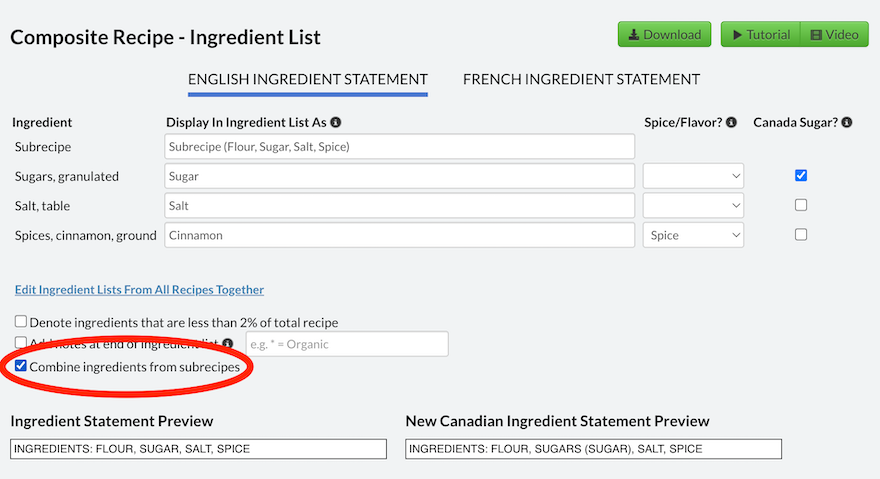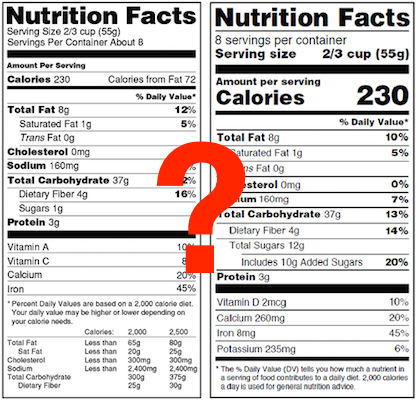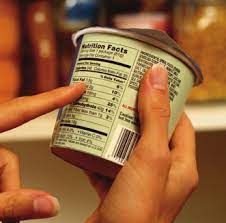Composite Ingredient Statements: Removing Duplicates in Subrecipes
Ingredient statements can be tricky, and our goal is to make them as mindless and simple as possible by:
- Automatically putting ingredients in descending weight order
- Having preset default ingredient lists for common ingredients
- Updating all related recipes when making a change to an ingredient
- Allowing for bilingual English/French labels for Canada (and auto-translating)
- Combining duplicate ingredients (and spices and flavors) for determining descending weight order
- Allowing for notes at the end of the list
- Less than 2% statements
- Setting the list manually to override the default
- Locking the ingredient statement
That's a lot! We think we've come a good chunk of the way helping you make ingredient lists for your food labels, but one missing element was how we treat ingredients in subrecipes. The default has always been to list them in parenthesis, which generally makes sense.
Duplicate and Long Ingredient Statements
But what if that subrecipe has ingredients that are also in the recipe itself? Do we list sugar three times, or aggregated spices twice? That's perfectly acceptable, but that makes for a longer ingredient statement and might be less than ideal with limited space on your packaging.
After all, subrecipes are just convenient tools for organizing your process and recipes, and ultimately saving you time. It doesn't mean that you actually want your final labels to reflect that exact process.
If you prefer to learn over video, we have a version on our YouTube Channel and embedded below:
Enter Composite Ingredient Statements
Our new feature allows you to basically ignore the fact that you're using subrecipes. It will pull in the ingredients in the subrecipe based on how much you used in the recipe, aggregate duplicate ingredients and spices/flavors, and display the Ingredient Statement as if you had created everything in one big recipe instead of utilizing subrecipes.

Toggle the "Combine ingredients from subrecipes" option and voila!
The main problem it solves is shortening ingredient statements, since it will remove any duplicate ingredients used in subrecipes, including spices, flavors, and sugars (for Canadian labels).
Keep in mind that you still need to list all subingredients in parenthesis for ingredients you buy with subingredients - this is just for your own subrecipes that you use in other recipes.
An Example
You can see the result in the image above where we have some common ingredients in the main recipe and the subrecipe: Sugar, Salt, and both recipes have Spices.
Instead of listing out everything like "INGREDIENTS: SUBRECIPE (FLOUR, SUGAR, SALT, SPICE), SUGAR, SALT, SPICE", the subingredients get pulled out of the parenthesis and the Sugar, Salt, and Spices get aggregated and combined since they're the same ingredient and the result looks like "INGREDIENTS: FLOUR, SUGAR, SALT, SPICE".
This is a simple recipe used as an example, but for bigger recipes or ones with multiple subrecipes, the effect may be even greater.
The beauty of this is that it works for multi-level subrecipes, scales everything based on how much of the subrecipe you use, and re-orders the aggregated ingredients by weight, just as if you had created everything in a single recipe, but without the hassle.
Final Thoughts
We're excited to have this option out for our customers that utilize subrecipes extensively. It creates a bit more flexibility and control with ingredient lists while letting you stay organized with subrecipes. It's been on our list for a while and feels great to get out in the wild!
Thoughts, questions, comments, feedback? Reach out and let us know in the comments below.






